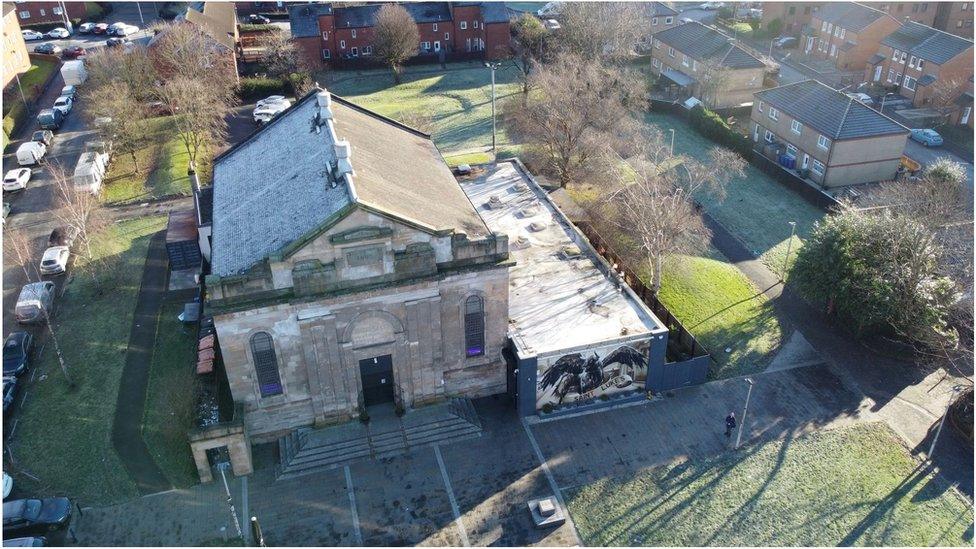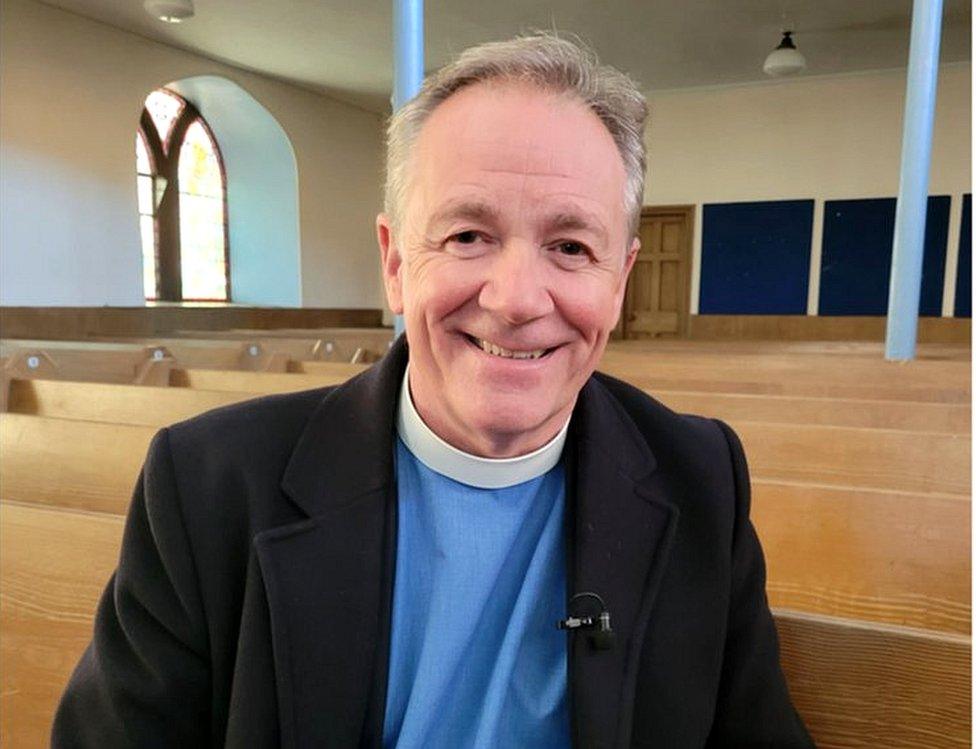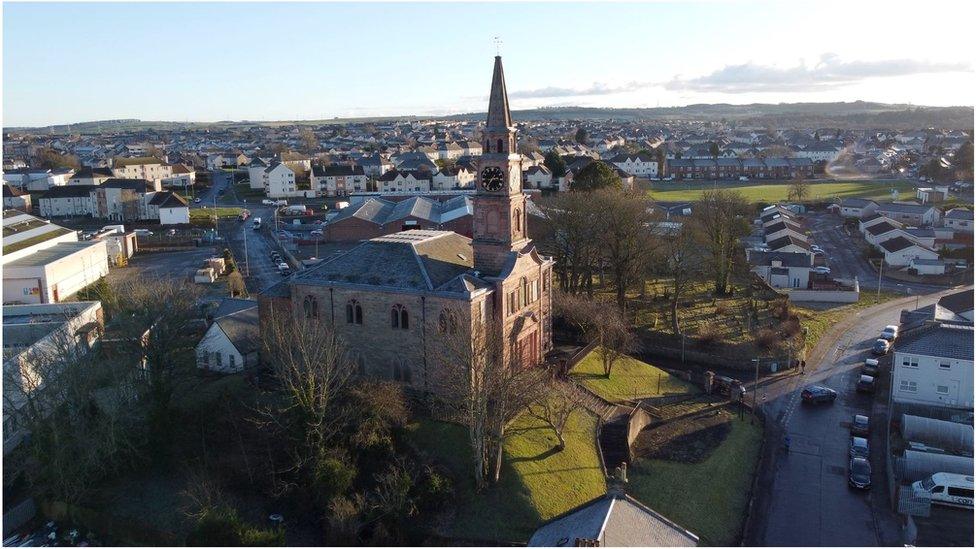Church as estate agent is a sign of the times
- Published

St Luke's in Glasgow's east end has been repurposed as a successful music venue
It is no secret that congregations across Scotland are shrinking.
But there is a section of the Church of Scotland website that suggests the organisation could almost reinvent itself as an estate agent.
The "Properties for sale" page offers everything from plots of land to former council houses and church buildings, ranging from offers over £40,000 to £400,000.
The Reverend David Cameron, Convener of the Church of Scotland Assembly Trustees, sees it as a sign of the times.
Looking at the entry for a church in Kilmarnock, East Ayrshire, an entire church is up for sale - complete with hall and modern fitted kitchen.

The Reverend David Cameron said the church has a surplus of buildings
"If you happen to have £160,000, it could be yours," he says.
The Church of Scotland faces a challenge.
With a portfolio of over 5,000 properties, second only to the National Trust for Scotland, it grapples with dwindling memberships and incomes.
Mr Cameron explains: "We have a surplus of buildings and a large property portfolio. With reducing membership and income, and the challenge to maintain these properties, we need to address our estate."
'Not a heritage society'
The condition of these properties varies from the well-maintained to worse-for-wear. This inconsistency underscores the need for a strategic approach to property management.
Mr Cameron says: "We are not a heritage society. Our focus is on spreading the gospel of Jesus Christ."

Riccarton Church in Kilmarnock is being sold for offers over £160,000
However, the heritage aspect of these buildings often overshadows their primary mission.
Selling churches, especially in rural areas, is sensitive. In some communities, these buildings are the only communal spaces available. Urban and rural settings alike face the high costs of maintenance and utilities.
But these church sales can turn these historic buildings into unique spaces.
St Luke's in Glasgow's east end, under the leadership of Operation Manager Alexander Riches, illustrates this transformation.
Since 2015, St Luke's has become a busy bar and concert venue. The renovation was no small feat.
"The biggest challenge was really just trying to get a vision in place to turn it into what you see now," Mr Riches says.

St Luke's is used as a music venue and wedding location
The project involved substantial investment, including £1.4m for regeneration and £70,000 for each stained glass window.
"When the owners first acquired the church, it was in a dilapidated state," he adds.
"The room we are sitting in was overrun with pigeons and practically falling apart.

Alexander Riches said taking on a church building requires an element of caution
"This was just the church hall. The adjacent building, which had been an active church, was still filled with pews and quite decrepit."
Mr Riches advises potential buyers to approach such projects with caution.
"It's not a decision to be taken lightly. Ensure that you have the right partners involved."
New Uses
Kimberly Guthrie, from Scotland's Town Partnership, sees potential in repurposing these buildings.
"There are so many examples... weddings, music venues, community spaces, art spaces, coffee shops," she says.
But she recognises the sensitivities around many of these buildings.

Kimberly Guthrie, from Scotland's Town Partnership, sees Church properties as key to regeneration
"These cultural assets are absolutely key as a regeneration strategy across our towns," she says.
"These buildings are the heart of some of our local places. They've got history, and they also encourage community appreciation of what we've got in the new era, as opposed to what we once had."
The Church of Scotland navigates a delicate balance between preserving its rich heritage and ensuring financial viability.
With proposals to sell underused buildings, the funds raised could support community aid programs and a shift to more efficient spaces aligned with current needs.
The Church faces mounting challenges in preserving an extensive property portfolio amid declining attendance and resources.
The decisions made in the coming years will not only shape the future of these historic buildings but also reflect the evolving role of the Church in modern Scotland.